The Formal Elements Serve as the Basic of Art
Do you lot know an respond to a question What are the elements of fine art exactly? Traditional style of looking at art, namely the visual arts, suggests that there are five basic elements of an art work – line, shape, color, texture and space. Yous might find form singled out as a separate category, divers as a three-dimensional culling to shape. Some also mention value, which is described as a parameter that determines the intensity of color, and pattern, which refers to repetition. Every bit yous tin already imagine, these are supposed to be the basic units deployed to constitute a visual system, ultimately perceived as a whole.
Thank you to the way our brain functions, we rarely interpret these units individually, unless we deliberately cull to focus on each of them in item, or in example the creative person aims to emphasize a single element in order to attain a certain result or to make a statement. The latter is a phenomenon more common for modern art, which emerged at the plough of the 19th century when the visual representation was challenged past an effort to deconstruct the existing assumptions which determined the way nosotros empathize the role of fine art and civilization. Fifty-fifty if most of today's art is not essentially based on the traditional forms of visual arts anymore, the elements of art continue to build our ocular perception. Hardly anything that belongs to the domain of the visual tin exist achieved without at least one of these elements.
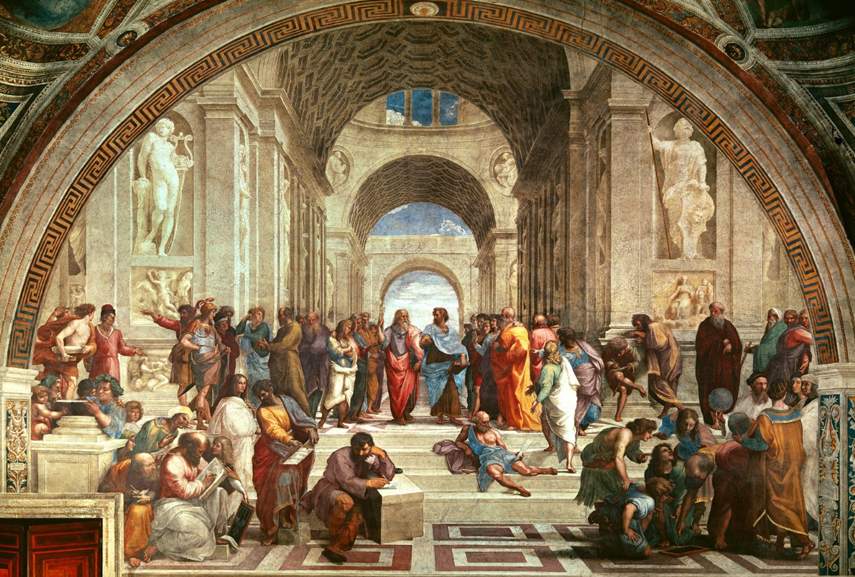
How We Apply Line in Fine art
Maxim that the line is the most essential of all art elements somehow comes naturally. Afterward all, it is usually the beginning and the most pristine upshot of our contact with writing tools, pens, pencils, crayons, etc, and typically the commencement affair we choose to use in order to represent the reality effectually the states. Even the occurrences that do non have strictly outlined edges, such as the sun, the clouds or water, are depicted with lines rather than smudges of colour in young children's drawings. What this ways is that lines are, in a style, our most valuable companions when it comes to expressing our feelings or thoughts, both for artistic and practical reasons. It is as well a very interesting thing to notice and analyze, given that a line is, in general, an abstract phenomenon basically invented past humans.

The Essence of Artistic Expression
A line is mathematically defined as a path that connects 2 dots or a path of an imagined moving dot. In reality, we tend to simplify all elements that are greater in length than in width, depth or bore, and to perceive them as lines. This includes the things we see in everyday life that exhibit linear features, but also the phenomena we perceive as lines due to our vision, which is instructed by linear perspective. The mode objects are bundled in infinite offers an epitome that usually consists of an endless number of various lines, even if these lines practice non exist in physical infinite. An object next to the surface of another, the outline of a figure against a afar landscape, the edges of mountains facing the sky – all of them present themselves as "lines", while in reality, they are much more or less complex. Nonetheless, the human capacity to interpret these visual stimuli into something equally uncomplicated every bit a line attests to the significance of abstruse thinking, and basically sums upwards the reasons why we are able to create something as artificial, admitting nature-similar, as art.
The line is particularly important for ane other reason equally well, and it is its potential to convey the personal touch of an artist. Every bit discussed in a higher place, lines are the chief tools of artistic expression, and therefore analogous to handwriting in terms of expressing individuality. A freeform line drawn by a single individual is generally inimitable, which ultimately helps us recognize the author of a painting or a drawing when there is no proper noun attached. A way of painting, brush-stroking, drawing or dripping is something each of us does differently. It makes a Picasso differ from a Braque.
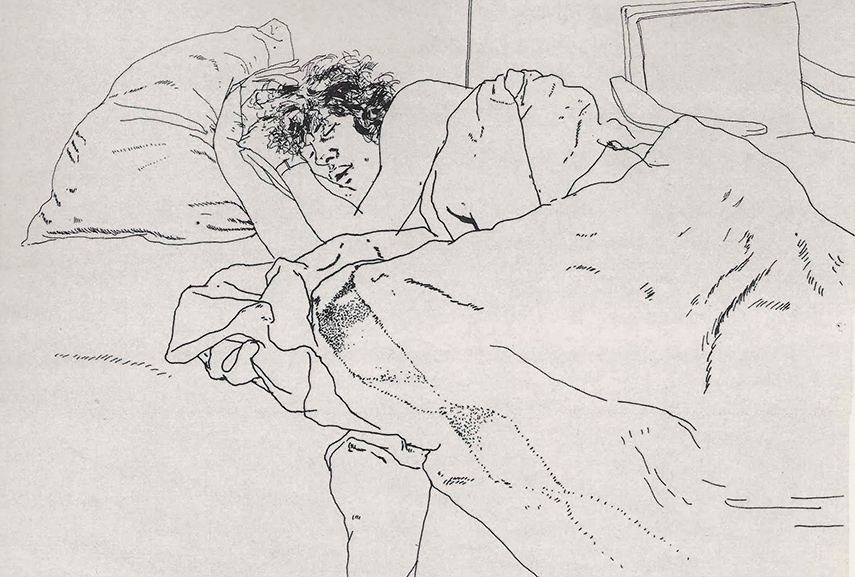
Examples of Shape and Form in Art
In one case we are able to recognize that a line is not just a line, but that information technology has a sure shape, it becomes, well – a shape. Shapes are defined as two-dimensional figures that we tin discern equally familiar. These include geometric shapes (deployed by cubists, for instance), organic (which you may find amid the examples of Art Nouveau posters and paintings), abstruse, etc. Form, on the other hand, is a three-dimensional effigy, significant that information technology occupies a sure amount of space. The characteristics of shapes apply to forms as well, and the only difference is represented through the engagement of the third dimension (usually denoted as depth).
This means that even when a painting aims to illustrate a single form, such equally a cube, for case, it really depicts the shape taken upwardly past the class, every bit seen from a certain angle. Information technology represents the cube'southward perceived book (which, from the front end angle, turns out to exist the square). Plain, grade is much more than frequently deployed in plastic arts, sculpture and architecture than in painting and drawing, still the communication between the two – the shape and the class – is the crucial aspect of many fine art genres. Most of today's architecture would have never been built if at that place wasn't for information technology. Even more apparently, the ability to transfer forms into shapes on paper makes the most of the entire painting process.
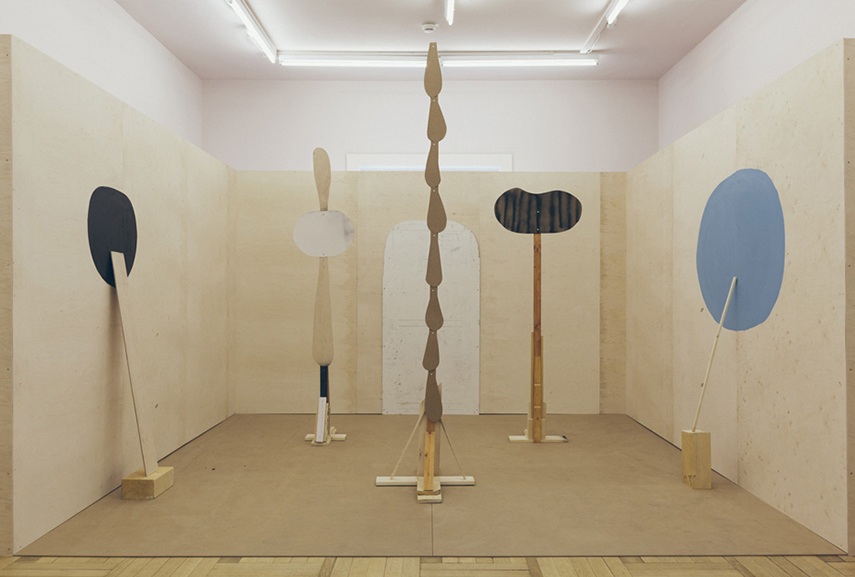
The Way We See Unlike Shapes
There is one interesting observation that examines the mode nosotros perceive sure shapes and why we perceive them as such, for that matter. While the reference to the organic and the geometric ones should be obvious – the former we run across in our natural environment, the latter was invented past humans themselves – our ability to recognize the abstruse is not as easily explained. While growing up and building experience, nosotros learn to detect or dismiss objects and their forms in fourth dimension, meaning that our encephalon organizes the percept in our memory. This helps us identify those that cannot be named or attributed to the organic ones, and perceive closed or almost-closed lines as shapes, and non lines. The principle to organize particles into a whole, and to prefer the whole to a "sum" of units is what psychologists phone call Gestalt, which we will become back to later in this article.

Space in Art
All fine art is placed within a certain space (aren't we all, in the end). But when it comes to visual arts, at that place are several ways in which we tend to use the term space. Infinite is often illusively recreated in a painting or a cartoon, realistically or in a distorted mode. Equally much every bit the representation of space is an important part of all visual arts, especially when being trained for painting or when studying architecture for example, it is the least engaging way to refer to the term as an art element at this point, since it functions on the same principle as shape/grade analogy does. At times, the word-infinite is used conditionally, to refer to the ii-dimensional negative space left in the slice of sail or paper. A "blank", or simply negative space, is sometimes a constituent part of an artwork, but rarely in an explicit manner. The intact part of the paper is very frequently deliberately left that way, in order to create the desired context and to suggest the right scale for observing the bailiwick matter, which thus occupies the then-chosen positive space.
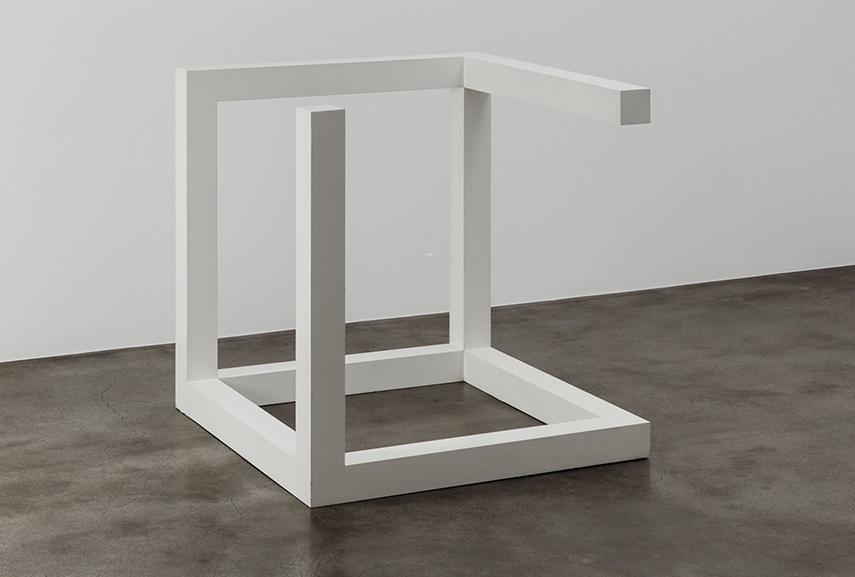
The Physicality of the Created Space
Of class, this analogy is derived from the real, physical space that we inhabit too. Consequently, a piece of art, be it a sculpture, an assemblage, an installation or even a painting, occupies a particular physical infinite with a certain purpose. More than often than not, the determination to surround a work of art with sure elements or to position it confronting a particular backdrop is intentional and integral to the artwork. The distance from which we may exist able to find a painting and the possibility to circle around an exhibit are almost equally relevant as the content of the artwork itself. This is specifically important for art installations, since the concepts behind them are ordinarily site-specific, or at to the lowest degree site-suggestive, meaning that the venue is dictated by the character of the installation. The thought of negative and positive space applies here as well, but information technology tends to create confusion when information technology comes to big-scale pieces and fine art installations. One of the masters of this inversion of negative space is Anish Kapoor, whose pieces often literally become the infinite itself.
"Sculpture isn't merely an object in space. It lives through the processional or returning view. In a normal-scale object-a[n Auguste] Rodin or [Donald] Judd for example, the living process is the walking around its three-dimensionality. We're accustomed to the mise en scène in which the first view is the whole view, just you lot have to keep reviewing the medium, merely equally you lot do with Rodin because the front end of Balzac is non the same equally the back." - Anish Kapoor
Check out more works by Anish Kapoor on our market place!
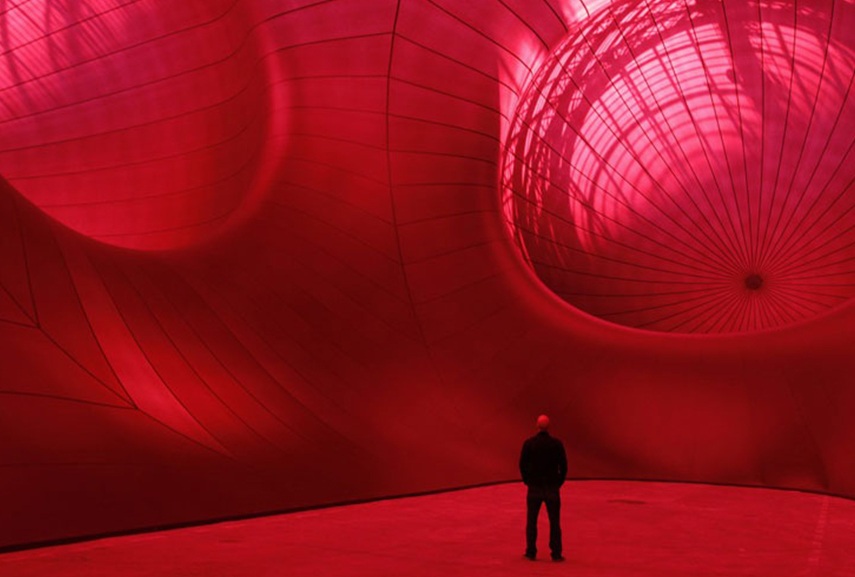
Colour and Texture in Visual Art
Finally, two qualities that strike us in everyday life and serve as an inexhaustible source of inspiration are color and texture, both of which have been studied, both in arts and science, for centuries. Color is the light reflected off objects, perceived in different hues depending on the wavelength. Thanks to the so-called cone and rode cells, our eyes are able to absorb the light and to distinguish three channels of colors that consequently burst into millions of tones, which makes our world appear then beautiful and brilliant. Allegedly, colors are able to induce the widest range of emotions out all the visual art elements, which is why they are often seen as enigmatic and ambiguous every bit if they truly possess a power to impact our emotional country.
The utilize of colors in gimmicky psychology is therefore numerous, equally both through our experience and our innate physical responses each color becomes associated with a diversity of feelings, and lately even with certain social and political significations equally well. The list of artists who researched color and its implicit language is quite a long one, and it involves the Bauhaus mystic Johannes Itten, the color-field painters Rothko, Newman and Klein, the minimalist Frank Stella and the Op Fine art pioneer Bridget Riley, the aforementioned Anish Kapoor… This could basically go on for hours, given that the significance and impact of colour is crucial for arts, significant that even when at that place is no color, it becomes a subject of why in that location is no colour. Similarly, when the colors are non imitating the ones from real life, they limited the creator'southward own cess of reality, given from a specific standpoint. For this reason, it was oftentimes incorporated every bit an chemical element most apt to evangelize a sentiment, either intuitively or intentionally. As the fascination goes beyond fine art, people have been struggling to recreate pigments from nature, to synthesize unnatural values and tones of color, and even to come across the "forbidden colors" that cannot normally exist seen in nature.
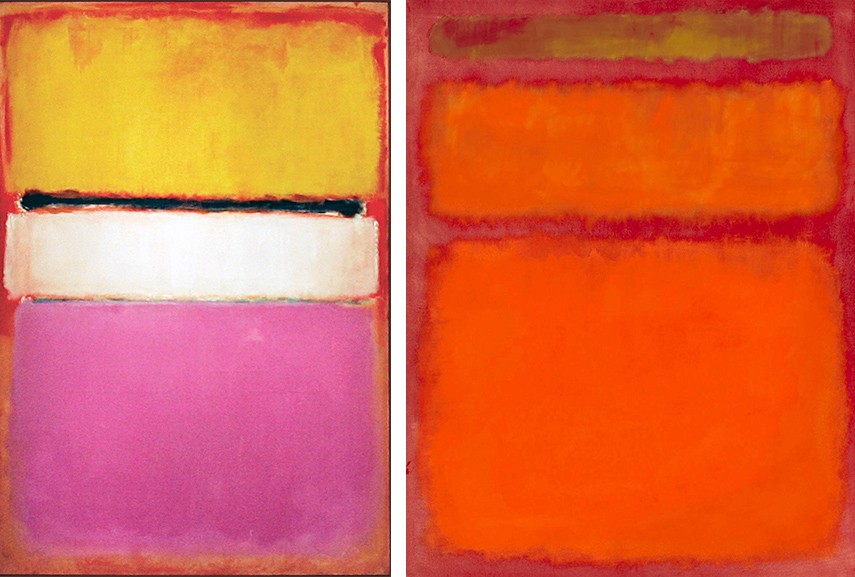
Texture and the Materiality of an Artwork
Texture is the quality of a surface, which is a sensation perceivable past the skin rather than the optics. All the same, we have been able to build a knowledge of how especially looking surfaces and materials feel, thanks to their palpable qualities and our experience with them. This means that translating the characteristics of a surface onto a plane makes u.s. experience texture through vision, as the painters showroom their skill in representing the texture truthfully. Texture tin can also exist a special quality relating to the torso of painting itself, ane that displays the visible brush strokes equally an integral part of the painting, similar the one of Wayne Thiebaud below. Nonetheless, the concept of a material'south roughness, softness or hardness is also frequently seen in other media, such every bit sculpture. The illusion of the material'due south original quality is often achieved by manipulating crafted materials, such as clay or woods. On the other hand, the artwork might be playing with our expectations from it, since various materials are commonly used to create illusions of a texture that they do not possess - such as the increasingly pop marble-looking foam rubber in furniture design, or the transparent rock in the architecture of Kengo Kuma.
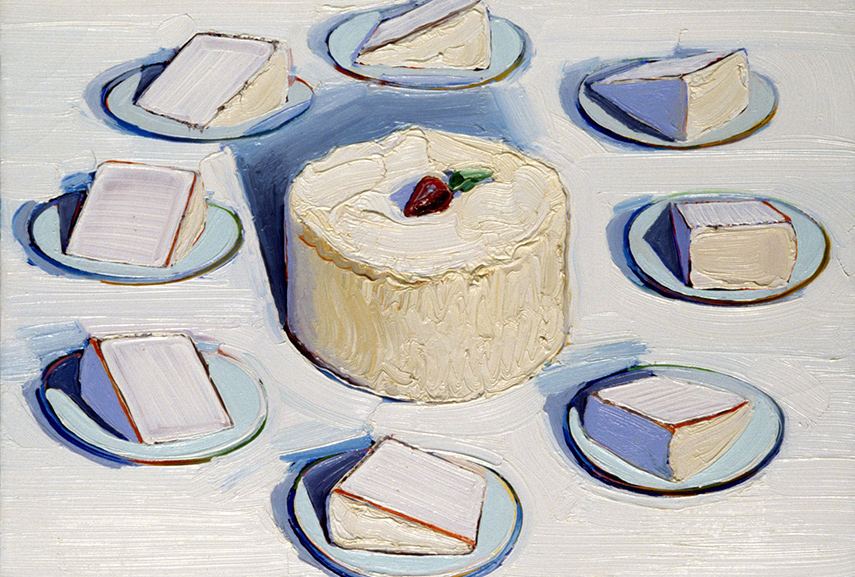
Elements of Art and Their Meaning Today
Before we conclude this commodity, it would be useful to reflect on the basic art elements and their relevance to today'due south art and art teaching. At some betoken, the difference between craft became drastic, and this "intellectualized" arroyo to art is a trend that remains to this mean solar day. Nevertheless, the means of expressing an idea are still based on the capacities of human senses, which haven't changed significantly since the beginning of humanity as nosotros know it. The digitally informed environs might bring some improvements to our senses, or fifty-fifty some decreases for that matter, just until that happens, everything we are able to experience and experience is still going to be served for the aforementioned receptors, our eyes, our skin, and ears.
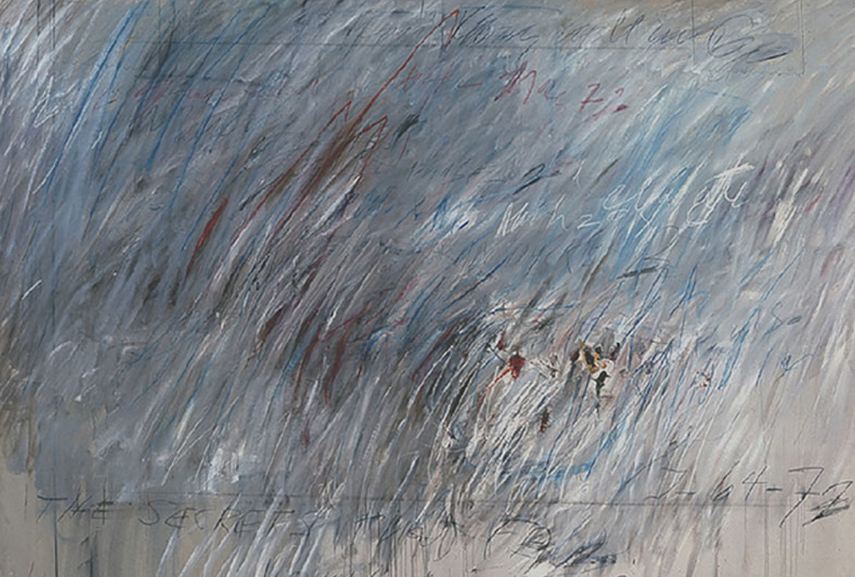
The Everlasting Modify in Perception
The subject affair and the mode we explore each of the elements of art changed over time, which led to an altered approach to these features. Gestalt psychology was mentioned in this text, due to its main principle that points out how human perception acknowledges the whole as other than a sum of parts. It recognizes the anthropological tendency to group like traits and to categorize information, to connect parts and to deduce significant rather than merely observe without contemplation. Information technology could be said that visual representation functions according to this theory, but so does our cerebral ability to consider different ideas and phenomena.
Hence, information technology is important to mention that modern fine art was a time of exploration, a time of difference from tradition, and also a moment to abandon everything we know and to grasp the uncanny, which at times meant separating each of these elements and challenging the Gestalt. Nosotros tin can see the outcomes of these intents through many historical movements, such as De Stijl, the Bauhaus, Abstruse Expressionism, Minimalism, and so further. The elements were finally reduced to their essential notions in abstract art. Finally, at present that we've overcome the modern era, and probably the postmodern as well, we are beginning to observe new purpose for each of the classic elements of fine art, aware of how they were reinvented in the era of modernism. This means that everything can exist brought into question, and the possibility of a single meaning no longer exists, only like the postal service-structuralist philosophy suggests. Our beautiful visual world is richer than ever, and so are the ever-progressing means of representation.

Editors' Tip: Optics Of the Peel
Juhani Pallasmaa wrote The Optics of the Pare in 1996, and it has become a classic of architectural theory. However, even though the book mainly centers around the question of why has one single sense – sight – become and then predominant in architectural civilisation and design, it may also exist perceived every bit a guidebook to understanding the power and nature of our five senses. Furthermore, information technology explains the principles on which our sight is based, and how we managed to evaluate and visually guess the phenomena that practise not speak to our eyes.
Featured image: Henri Matisse - La Danse (1909); Report of 2 Dancers by Edgar Degas, charcoal, Loftier Museum of Art. All images are for illustrative purposes only.
Source: https://www.widewalls.ch/magazine/five-elements-of-art
0 Response to "The Formal Elements Serve as the Basic of Art"
Post a Comment